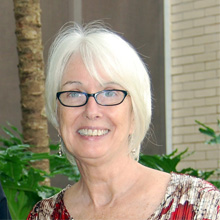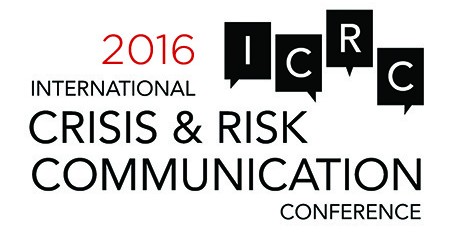
Research Coordinator, College of Behavioral and Community Sciences
University of South Florida
United States
Ardis Hanson earned her Ph.D. in Health and Organizational Communication from the University of South Florida. Currently a research coordinator at the university, Dr. Hanson’s research focuses primarily on language and social interaction, that is, how language is used in everyday practice to negotiate claims and identities. Specifically, she studies the social languages and user constructs that are important components in the design and implementation of services, ranging from one-on-one delivery of services to large policy groups deliberating best practices and envisioning strategic and operational changes. Using an interpretative approach helps her rethink the roles that practitioners and academics play in generating knowledge in the field and to make visible the actions in which a group of people engages to decide upon a course of action. She prefers a grounded practical theory to facilitate exploration of the unique, situated, patterns of coordinated activity within any group of individuals across a variety of settings and issues. She, with Mariaelena Bartesaghi, and Barbara Bennington, is the recipient of a National Communication Association Public Policy Workgroup grant, “Conceptualizing Risk: An Analysis of Academic Perspectives to Inform Public Policy”, which is a systematic review of the risk/crisis communication literature with the intent to propose a dynamic “moment to moment” communicative dynamic of decision making. She is a published authour with Oxford.
2014
Breakout Session: The Consequentiality of Risk Communication: Implications for Risk Researchers
Despite the apparent increase in the incidence of disasters in the 20th and 21st centuries, there are few prospective systematic studies of disasters. This is due to several factors. First, field research is more difficult when it is compounded by the actual circumstances of disasters. It is rare observers are available to assess and record the decision making process or note what information was preferred or discarded. Second, the differences in methodologies used in disaster research make generalization of the decision making process problematic. Time frames, identification of populations, sampling, and instruments vary widely among researchers, who may have very different theoretical frameworks and conceptualizations of the effects of disasters. Hence, post facto evaluation is prevalent in the literature. Further, the term ‘risk communication’ appears as if it is transparent, and yet we note that it often signifies a post facto evaluation, focusing on the outcomes of a process or dynamic, where the implicit or explicit question is “What went wrong?” In Communication Studies, disaster research falls primarily into the closely related fields of crisis and risk communication. The academic, research, and practice literature on risk communication is characterized by disciplinary perspective, by broadly chronological phases, in terms of competing conceptual approaches, such as technocratic, decisionist, or deliberative approaches. I suggest that risk is explicated through discursive and linguistic strategies found in the talk (transcripts) and texts (institutional documents) generated from disaster preparedness, planning, or mitigation and post-disaster evaluation. These talk and texts are used by stakeholders in their decision making process. Although process models examine relationships between stakeholders and institutions, they often neglect the relationship between experts and stakeholders in the policy knowledge process. There is little systematic investigation into the process of accounting for “why, when, and how” expert knowledge is utilized by decision makers, particularly which expert knowledge stakeholders use and/or create. If expert knowledge in decision making is central to the problem-solving activity necessary to mitigate the potential effects of a disaster, Hanson argues a communication approach allows us to make decision making visible in terms of a communicative dynamic. Dr. Hanson will examine the risk communication research to show the analytical models that are most frequently used and argue for a “moment to moment” communicative dynamic of decision making. Hanson suggests a research perspective that takes into consideration the consequentiality of communication, which moves beyond the end results of a risk or crisis event and considers the procedures, dynamics, and structures of communication.


